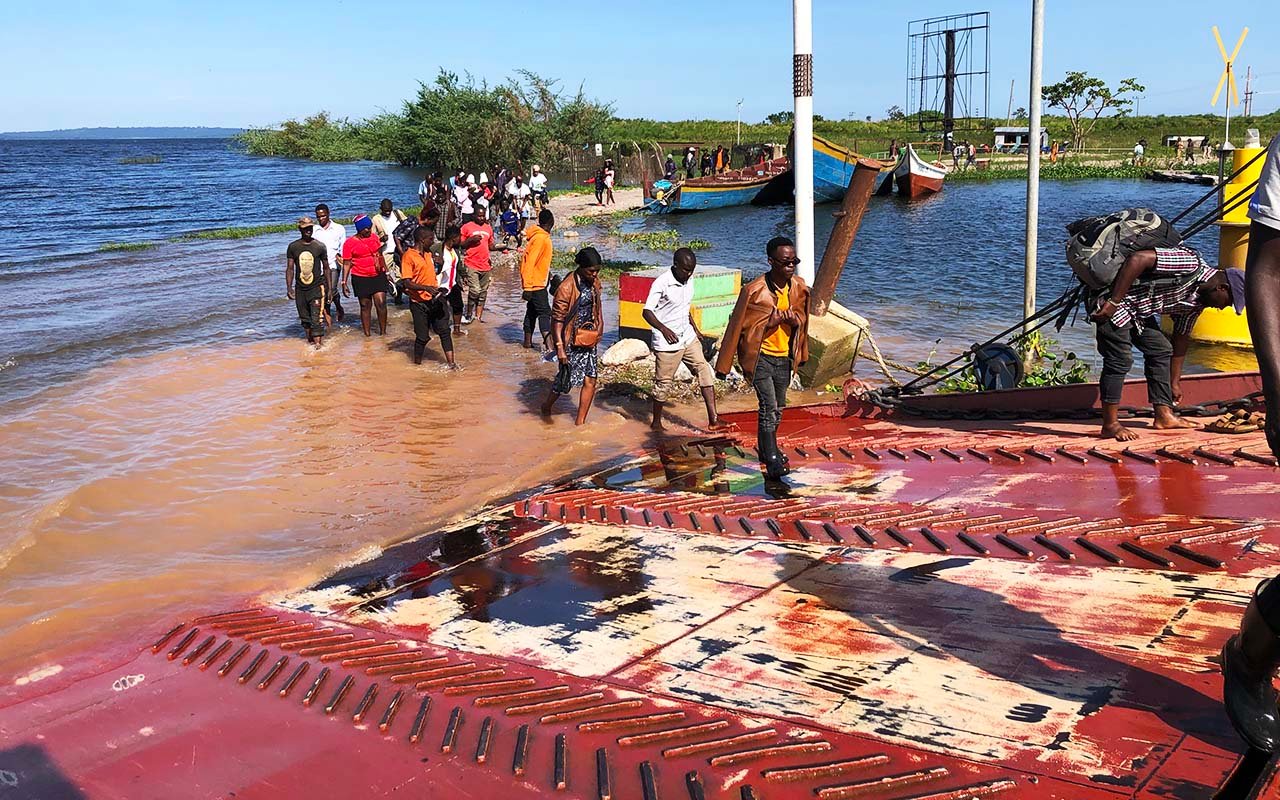Prime
Govt pays Shs26b extra to run Kalangala ferries - AG

Passengers heading to Kalangala District wade through water to board the MV Ssese Ferry at Kachanga Landing Site in Masaka District.
What you need to know:
- The Auditor General says this was due to contractual obligations.
A value-for-money audit in the provision of ferry services in Uganda has revealed that the government paid Shs25.7 billion in excess to Kalangala Infrastructure Services (KIS), a firm managing the ferries that ply the Bugoma-Bukakkata Route.
Conducted in October 2022 by Auditor General John Muwanga, the report reveals how the excess payment by the government was due to contractual obligations.
“Amendment No.1 of the contract signed between the Government of Uganda and Kalangala Infrastructure Services Limited(KIS) changed the payment terms for ferry services from per passenger transported to a fixed rate per trip,” the 49–page report reads in part.
“Because KIS ferries carried fewer passengers than targeted, the cost per passenger per trip for KIS ferries (MV Ssese and MV Pearl) was found to be high in this regard,” the report adds.
According to the audit report, ferries under KIS planned to undertake 20,800 trips between 2018 and 2021 but undertook 21,128 trips transporting only 2,353,229 passengers, which is 54 percent of 4,352,368 expected passengers during the same period.
The extra trips, according to the report, were due to referrals from Kalangala District Health Centre IV on Buggala Island to Masaka Regional Referral Hospital on the mainland, which are usually medical emergencies.
Statistics
According to the report, in 2019, where the passenger numbers for both MV Pearl and MV Ssese were high per trip, the government spent Shs5.5b, while in 2020, where there were fewer travellers, the government paid Shs1.7b.
The report further revealed that transporting a passenger per kilometre per trip on KIS ferries on a 7km route went on rising from Shs3,915 to Shs4,041 compared to MV Kalangala, which plies a route of 64km, only costing Shs2,000 for one passenger per kilometre per trip.
“This is half of what the KIS ferries covering less than 7km per route spent per passenger at Shs3,915 to Shs4,041 per kilometre on each passenger per trip,” the report reads, adding: “..... re-negotiating the terms of this contract would result in savings that could potentially be ploughed back into opening up other ferry routes to unserved areas, or improving existing ferry infrastructure.”
The KIS Spokesperson, Mr Joseph Mulindwa, declined to comment on the report saying he needed more time to consult.
However, the Ministry of Works and Transport officials told the Auditor General in the report that the said payment terms signed with KIS were stipulated in the implementation agreement, which included considering exchange rates and fuel prices.
“MV Pearl and MV Ssese are operated by Kalangala Infrastructure Services Limited ( KIS) whose payment terms are stipulated in the implementation agreement, adjusting for fuel, core CPI, exchange rate, and six-month labour rate changes. However, since the implementation agreement ends in June 2015, the terms in the agreement will be re-negotiated before consideration for renewal can be made,” the report reads.
In the same audit report, the Ministry shows its commitment in re-negotiating with KIS before consideration for contract renewal.
background
Water transport is a lifeline for many, connecting islands in lakes and bridging shores separated by rivers and lakes.
The 2008-2023 Uganda National Transport Masterplan focused on improving water transport services by allocating investments to ferries and ports which saw the number of public ferries increase from 14 in 2018 to 17 in 2023.
Of the 17 existing ferries, Uganda National Roads Authority and Ministry of Transport run 15 ferries on inland water crossings in Uganda, while Uganda Railways Corporation operates two ferries on Lake Victoria, linking Port Bell and Jinja Port (Uganda) with the ports of Kisumu (Kenya) and Mwanza (Tanzania).
Available statistics show that the ferry capacity also rose from 1,702 passengers in 2018 to 2,112 passengers in 2022 and cargo capacity from 2,830 tonnes in 2019 to 4,390 tonnes in 2022.
However, there are persistent concerns about limited connectivity, ferry breakdowns, and makeshift boat use, with up to 5,000 deaths occurring annually on Lake Victoria alone, due to boat accidents.
Uganda’s Vision 2040 emphasizes the importance of the transport sector- particularly inland water transport- in fostering socio-economic development.




